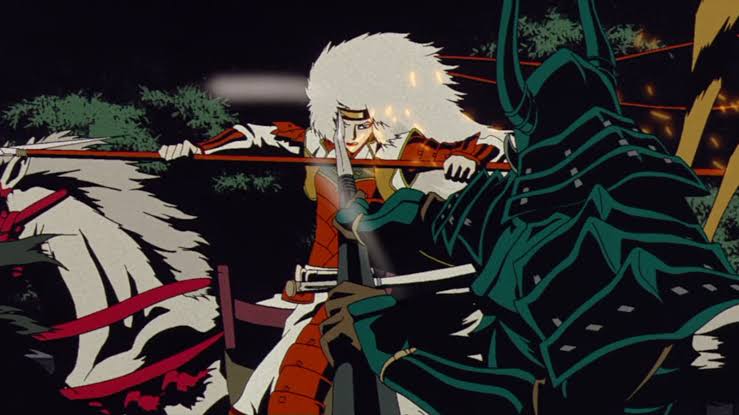Follow us on Google News
Get the latest updates directly in your Google News feed
Cowboy Bebop‘s creator, Shinichirō Watanabe, is well known for his ability to craft stories that go beyond genres and provoke deep thoughts. While it’s mostlyCowboy Bebopthat gets the spotlight, one of his most underrated creations can be found in the 2003 anthologyThe Animatrix. This film, an exploration of humanity’s fall and the rise of machines in theMatrixuniverse offers one of the most disturbing and thought-provoking scenes in anime history.

Despite the thematic depth, some viewers have misinterpreted this scene’s original purpose. At first glance, this particular scene fromAnimatrixwas deemed to be sexist. However, it actually served as a metaphor for real-world dehumanization and violence against marginalized communities.
The Controversial Scene from TheAnimatrix: The Second Renaissance
Before diving into the specifics of the highly debated scene, it’s important to understandThe Animatrixas a whole.The Animatrixis an anthology of nine animated short films set in theMatrixuniverse released in 2003. One of the most significant entries in the anthology isThe Second Renaissance, which serves as a prequel to the originalMatrixtrilogy.
This entry delves into the rise of machines and the subsequent war between humans and artificial intelligence. Directed by Mahiro Maeda, and supervised byShinichirō Watanabe, this two-part story demonstrates humanity’s dark descent into fear and hatred of the machines they created, eventually leading to their enslavement.

“That’s always going to be kind of be sprinkled in”: Terminator: Zero is a Tribute to Mattson Tomlin’s Favorite Anime of All Time That He Openly Confesses to be a Major Inspiration
The particular scene inThe Second Renaissance, Part Icomes during an anti-machine riot. As tensions between humans and machines reach a breaking point, a violent mob drags a woman into the streets. She appears to be human at first, pleading for help in the face of brutal attacks. But as the crowd savagely beats and strips her, it’s revealed that she is actually a robot. Her synthetic skin tears away, exposing her robotic interior.
Animatrix (2003)pic.twitter.com/9qstCTRrbf

Her voice, which initially sounds human, becomes distorted; resembling desperate white noise. The scene finally ends when she is shot in the back and left on the ground, broken and destroyed. This scene is extremely disturbing, not just for the violence but because of the chilling way it portrays how hatred can strip someone of their humanity in the eyes of others.
The Scene fromAnimatrix: A Reflection of Transgender Struggles
This scene fromAnimatrixhas been heavily criticized by the viewers claiming it to be sexist, and created by men to dehumanize women. However, there’s a crucial piece of context that is often overlooked. Among the creators of theMatrixuniverse, theWachowski sisters, are trans women, and this scene is meant to be an allegory for the violence and dehumanization faced by trans women when their identity is revealed.
To everyone who keeps saying this scene is sexist or it was made by menFun fact it was actually by trans women and this scene is meant to be an allegory on how trans women are treated when found out to be trans.https://t.co/INMZcbUZzb

The human-to-robot transformation of the woman is symbolic of the discrimination and violence that trans women used to face when their gender identity was exposed. The distortion of her voice, from human cries to mechanical noise, reflects the way trans women are often stripped of their humanity and reduced to objects of hate once their true identity is discovered.
The Wachowskis’ personal experiences as trans women undoubtedly influenced the way this scene inAnimatrixwas framed. Their personal experiences and Shinichirō Watanabe and others’ careful direction come together to create a haunting reflection of society’s tendency to dehumanize those who are different.

Cowboy Bebop Creator on Who Inspired Him Never to Make Anything Similar Again: ‘He is someone who I greatly respect’
In the end,The Second Renaissanceis not just an expansion ofThe Matrixuniverse; it is a sincere commentary on the darker sides of human nature. It serves as a haunting reminder of the importance of empathy and understanding, and how easily humanity can lose sight of these values when faced with something or someone they don’t understand.
The Animatrixis currently available to watch on Amazon Prime Video.
Moumita Chakraborty
Articles Published :931
Moumita Chakraborty is a seasoned Anime Writer at FandomWire with over 900 published articles. Passionate about the vibrant world of Japanese anime, she brings sharp analytical skills and cultural insight to every piece. From dissecting intricate plotlines to spotlighting the latest trends and releases, Moumita’s work resonates with both casual fans and seasoned otakus. Her writing aims to connect with fellow anime enthusiasts while contributing meaningfully to the ever-growing anime community.